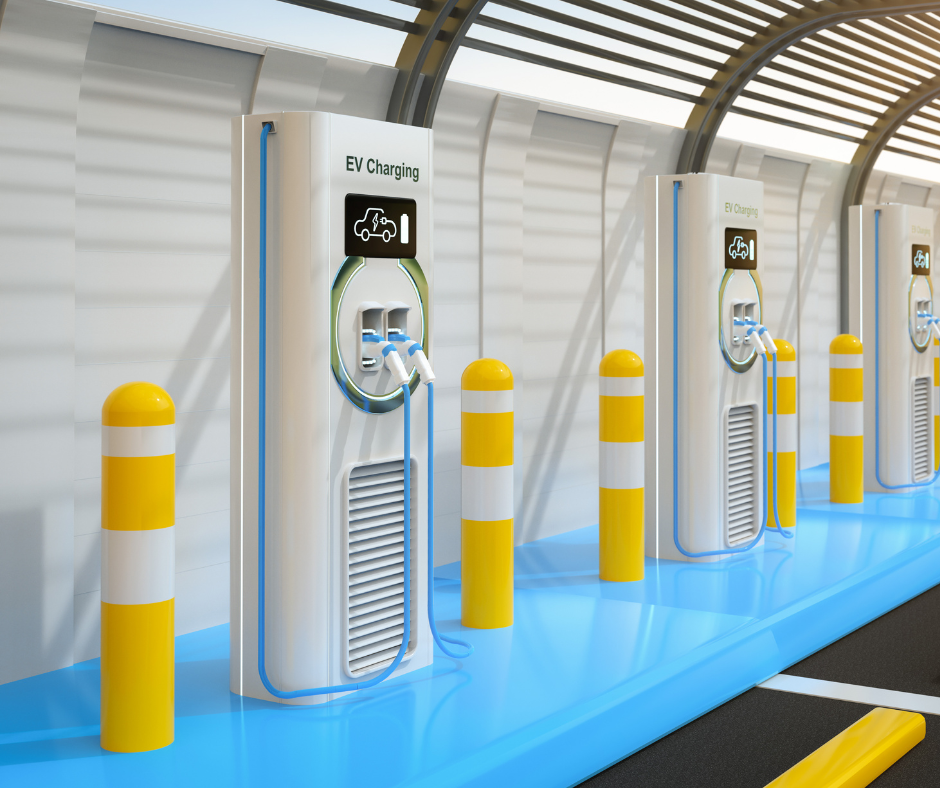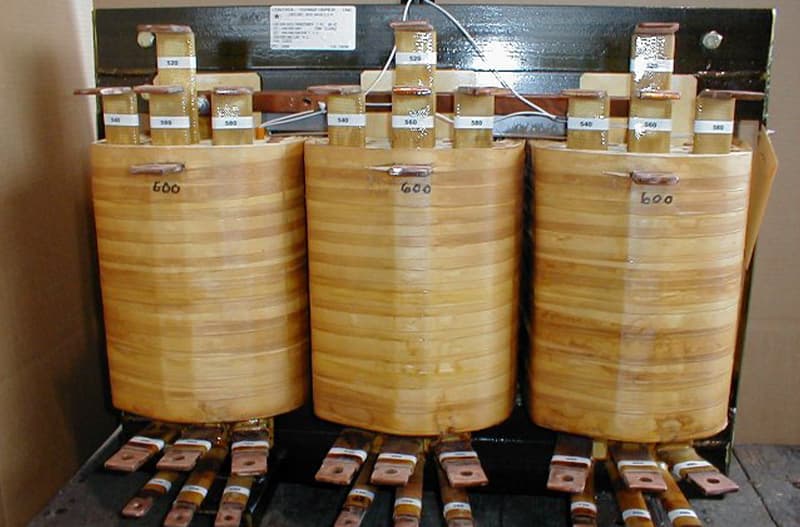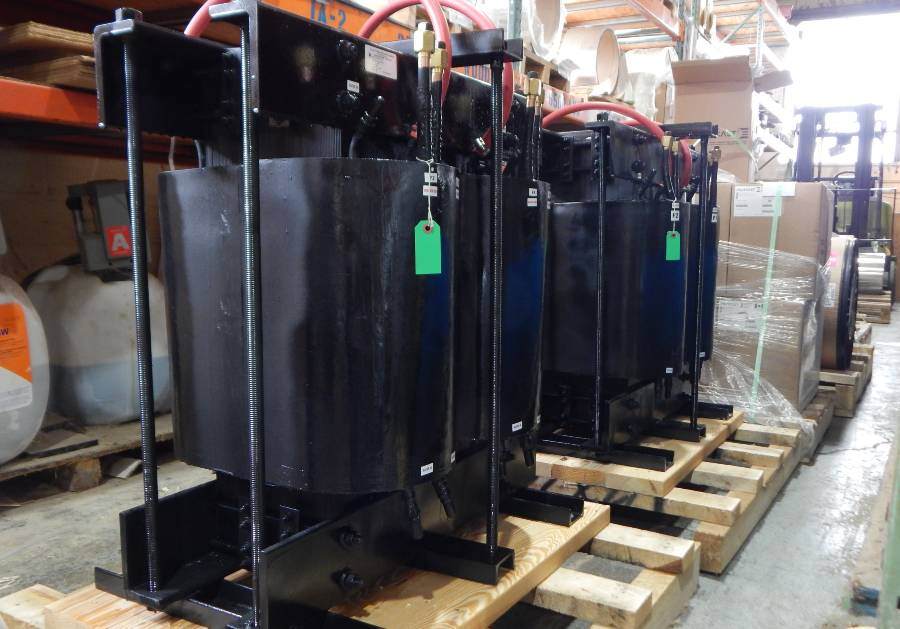How to Extend Transformer Life: Maintenance, Monitoring, Preventive Strategies
Transformers are among the most critical — and expensive — assets in any electrical system. They’re expected to operate reliably for decades, but...
Control Transformer designs high-performance, fully customized magnetic solutions that are tailored to your power, frequency, and environmental needs.
Control Transformer has more than 70 years of experience delivering reliable, custom-engineered magnetic solutions across numerous industries.
4 min read
By: Control Transformer, Inc. on Aug 18, 2025 11:12:17 AM

As the electric vehicle (EV) ecosystem grows rapidly, the backbone of charging networks is increasingly defined by custom magnetic components—specifically transformers—that are purpose-built for performance, safety, and regulatory compliance.
This guide helps buyers evaluate design partners with a focus on transformers for EV charging infrastructure. Learn more here: EV Charging: Control Transformer Industries Page.
EV chargers—particularly DC fast chargers—place unique demands on power systems. These devices draw large, rapidly fluctuating currents, which can introduce harmonics and voltage distortion into the grid. To mitigate these challenges, custom-designed transformers use specialized winding techniques, optimized core materials, and precision-engineered insulation systems that improve power quality and system stability.
Beyond electrical performance, space and thermal constraints present another set of challenges. Charging stations are often installed in compact, outdoor enclosures where ventilation is limited and exposure to heat, moisture, or dust is constant. Custom transformers can be tailored to minimize size, enhance heat dissipation, and operate reliably under extreme conditions—all while meeting ingress protection and environmental durability standards.
The shift toward high-frequency switching in EV power conversion—driven by the rise of SiC and GaN semiconductors—further raises the bar for transformer design. These systems require magnetic components that perform efficiently at higher operating frequencies. Custom transformers address this with advanced materials and geometries that reduce losses and improve energy throughput.
Finally, safety and compliance remain critical. EV infrastructure must adhere to a growing list of industry standards, including UL, IEC 61851, and ISO 26262. Custom transformers are engineered with these requirements in mind, incorporating insulation, clearance, and EMI mitigation measures that not only meet regulatory benchmarks but also ensure long-term reliability and user safety.
The surge in electric vehicle (EV) adoption is fueling explosive growth in EV charging infrastructure—and with it, a rising demand for high-performance, application-tailored transformers.
In its Global EV Outlook 2025, the International Energy Agency (IEA) reported that over 1.3 million public charging points were added globally in 2024 alone—a 30% increase over the previous year. That single-year gain matched the total number of chargers installed worldwide in all of 2020, with China accounting for two-thirds of the new installations.
According to Grand View Research, the global EV charging infrastructure market was valued at USD 32.3 billion in 2024, projected to grow to USD 40.2 billion in 2025, and expected to surpass USD 125 billion by 2030, reflecting a CAGR of approximately 25.5%. Another independent report from Straits Research forecasts even higher growth: USD 38.9 billion by 2025, scaling to USD 199.8 billion by 2033, for a CAGR of 22.7%.
A recent market study by Research Nester estimated the global transformer market at USD 63.7 billion in 2024, with a projected CAGR of 7.8%, reaching USD 169.2 billion by 2037. This trend is echoed at the regional level as well. Coherent Market Insights predicts that the North American transformer market will grow from USD 11.7 billion in 2025 to USD 16.6 billion by 2032, while Global Market Insights pegs the U.S. transformer market specifically at USD 12.2 billion in 2024, growing at 7.7% CAGR through 2034.
According to Verified Market Reports, the custom transformer market—a highly specialized segment for tailored, performance-driven applications—was valued at USD 8.2 billion in 2024 and is expected to reach USD 12.6 billion by 2033, with a compound annual growth rate of 5.1%.
|
Key Trend |
Implication for Buyers |
|
Rapid expansion of EV charging infrastructure |
Standard transformers may fall short under high load, frequency, or thermal demands—custom designs become essential. |
|
Broad transformer market growth (~6–8% CAGR) |
But custom transformer demand is increasingly tied to niche requirements like fast-charging, isolation, and EMI compliance. |
|
Surging infrastructure scale |
Suppliers who can deliver high reliability, short lead time, and certified components gain a competitive edge. |
As this growth continues, buyers must look beyond basic specifications. The custom transformers that support EV infrastructure today must offer:
Bottom Line: The EV charging market’s rapid scale-up—combined with steadily growing transformer demand—makes early collaboration with a supplier who understands both power conversion and compliance essential. For EV infrastructure stakeholders, custom transformers are no longer optional—they're mission-critical.
Electrical Requirements
Mechanical & Thermal Requirements
Environmental Considerations
Regulatory & Safety Requirements
Expected Annual Quantity
Determines whether the design allows for hand-built methods (small runs) or requires tooling for volume production.
Target Production Timeline
Realistic design-to-delivery times for custom transformers range from 4 to 12 months depending on complexity and certification needs.
Budget Constraints
Communicating constraints helps designers balance performance vs. cost trade-offs—such as core material choice or winding complexity.
Intellectual Property (IP) Protection
Requesting NDAs upfront ensures proprietary product designs are protected—a common and professional practice.
A reputable partner should offer more than just engineering skill:
Control Transformer offers all the above with a dedicated focus on transformers—no distractions from unrelated product types.
|
Application |
Role |
|
Utility Step-Down |
Converts grid voltage to usable levels for internal charger circuits |
|
DC Fast Charging Isolation |
Provides galvanic isolation and power regulation |
|
Power Factor Correction (PFC) |
Works in tandem with rectifiers for grid stability |
|
EMI Filtering |
Reduces noise interference within high-density control panels |
These designs are tailored for low-loss operation, low-profile formats, and compliance with global EV charging standards.
Whether you're designing a Level 2 home charger or a commercial DC fast-charging station, Control Transformer delivers:
Ready to move from concept to production? Visit our Electric Vehicles Charging page or Contact Us to connect with our team.

Transformers are among the most critical — and expensive — assets in any electrical system. They’re expected to operate reliably for decades, but...

Transformers, though often out of sight and out of mind, are workhorses in electrical systems. Their lifespan isn’t just a matter of design — how you...

In today’s manufacturing plants, reliable power is non-negotiable. From automated production lines to precision robotics, even minor disruptions in...
Tell us about your magnetics needs. We'll give you an estimate of the resources needed to engineer a product to meet your exact specs, complete with a preliminary design.